News
Article
X-ray Microtomography of Solid Dosage Forms
Author(s):
X-ray microtomography has great potential for improving the understanding of the structural features of solid dosage forms and the changes in those features during manufacturing, handling, and storage. This article describes the basic principles of the technique and provides examples of its potential applications.
Pharmaceutical scientists have long sought the ability to see inside the solid dosage forms they produce to determine their products' structural features and to better understand their mode of action. Previous studies have used various techniques for visualizing the internal structure of solid dosage forms, including 1H NMR imaging (1), confocal microscopy (2), and conventional microscopy (optical and electron) combined with mechanical slicing of samples (i.e., microtoming) (3). One drawback of several current techniques is their invasive nature that can destroy the sample and prevent any further testing. Another is the techniques' limited penetration and resolution. Thus, it is probably fair to say that the ideal experimental approach for the three-dimensional structural imaging of pharmaceutical dosage forms has not yet been realized.
X-ray microtomography is a relatively new approach to imaging the internal structure of solid dosage forms. This technique has been widely used for the in vivo imaging of plants, insects, animals, and humans. X-ray microtomography is a nondestructive technique that has a high penetration ability and provides a reasonable level of resolution (~5–20 μm).
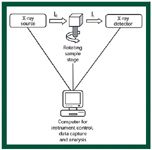
Figure 1: Schematic of X-ray microtomography instrument (I0 = incident beam, ItMay In the Field section5 = transmitted beam).
Principles of X-ray microtomography
The X-ray microtomography approach used in this work is an extension of the computer aided tomography (CAT) medical imaging technique commonly used in hospitals. X-rays are directed from a high-power source toward a sample, and a detector on the opposite side of the sample measures the intensity of the transmitted X-rays (see Figure 1). A two-dimensional "shadow" image is produced by accurately rastering the X-ray beam across the sample. The sample then is carefully moved (usually rotated) relative to the X-ray beam, and the process is repeated to produce additional two-dimensional images from various view points. Using a sophisticated Fourier transform algorithm, the two-dimensional images then are combined to generate a complete three-dimensional map of the sample.

Figure 2: Conventional bilayer tablet structure.
The intensity of the X-rays reaching the detector is controlled by the sample path length and the X-ray attenuation coefficient of the material that it encounters on that path (4). The longer the path length and the greater the attenuation coefficient of the material (see http://physics.nist.gov/PhysRefData/XrayMassCoef/tab3.html ), the greater the number of diffraction and scattering events, thereby weakening the X-ray beam that reaches the detector. The varying levels of signal intensity provide a gray-scale in the images from which information about the density, thickness, and attenuation properties of the sample can be obtained. Very dense or thick regions and areas that contain heavy elements (e.g., sodium, chlorine, or iron) will generally create the most contrast in the final images. In very simple terms, X-ray microtomography can be thought of as creating a three-dimensional map of the relative atomic density of the sample under evaluation.
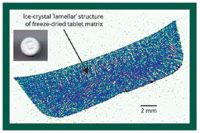
Figure 3: Cross section of a fast-dissolving tablet manufactured by lyophilization.
The instrument used in this work was a Skyscan 1072 device (Skyscan, Aartselaar, Belgium) with a 100-kV, 98-mA X-ray source. It was operated in cone-beam mode with 0.90°-step random rotation of the sample between scans and a 180° total sample rotation. Corrections were made for imperfections in the detector output and for obvious beam-hardening effects. The vertical two-dimensional raw data image files (1024 × 1024 pixels) were "reconstructed" using the Skycan proprietary software to create a series of several hundred horizontal cross-sectional views of the samples. These images could be processed further to create complete three-dimensional structural maps of the samples. Gray-scale images also could be manipulated using standard image analysis techniques to produce binary or multiple-colored images and to obtain dimensional information about the sample. The maximum sample size that the instrument can accommodate is ~19 × 19 × 19 mm because of the size of the sample chamber and the effective focal length of the X-ray system. This size is adequate for most solid dosage forms. Because the detector creates raw data files of 1024 × 1024 pixels, the image resolution can be no better than about one-thousandth of the image field of view. For example, in a 15 × 15 mm field of view, each pixel will be ~15 × 15-μm. As the field of view is reduced below ~5 × 5 mm, the resolution of the instrument becomes limited by the effective width of the incident X-ray beam. The instrument manufacturer quotes a maximum resolution of ~5 μm. In this study, typical data acquisition times for solid dosage forms were 30–90 min., and data analysis usually took 1–3 h per sample, depending upon the level of detail required.
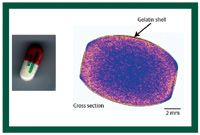
Figure 4: Gel-coated analgesic tablet structure.
Applications
Two- and three-dimensional images of a wide range of solid dosage forms were acquired in this study and used to learn more about their function and structure. The following provides several examples of how such information can be used to aid in the design and testing of pharmaceutical tablets and in solving related technical problems.

Figure 5: Osmotic tablet structure in the region near the hole in the coating.
Elucidation of structural features.Tablet shape and dimensions. X-ray microtomography can provide simple information such as the shape and size of the regions of a dosage form that are not readily accessible. For example, the technique is ideally suited for determining the thickness of layers in multilayer tablets and for determining the shape and size of the interface between these layers (see Figure 2). It also can be used to elucidate the microstructure of fast-dissolving tablets such as those manufactured using lyophilization in which the structural features reflect the size and shape of the ice crystals that were present in the tablet before drying (see Figure 3). Reports in the literature also point to the utility of this technique for assessing the morphology and pore-size distribution of pharmaceutical granules (5, 6). Farber et al. concluded that it was especially useful for studying the connectivity and shape of voids within granules made using wet granulation (5).
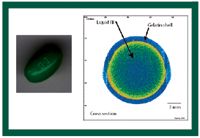
Figure 6: Cross section of a liquid-filled soft-gelatin capsule.
Coatings. X-ray microtomography can be used to measure the thickness of a functional coating (see Figure 4) and to assess variations in the film-coating thickness at the corners of the tablet to ensure the integrity of the coating is maintained over the entire surface of the dosage form. For an osmotic controlled-release dosage form it is quite simple to determine the key dimensions (e.g., location, diameter, and depth) of the hole in the coating from which the active ingredient will be expelled (see Figure 5) (3). Likewise, in a liquid-filled soft-gelatin capsule the thickness and integrity of the capsule's solid shell and its welded seam can be readily determined (see Figure 6).

Figure 7: Embossing on the surface of an immediate-release uncoated tablet.
Embossing details, defects, damage. Embossed markings on a tablet's surface are quite easily resolved and measured using X-ray microtomography (see Figure 7). This capability could be used to help troubleshoot tablet manufacturing problems such as sticking or picking. Defects in or damage to the internal structure of a compacted tablet also can be detected. Researchers have used X-ray microtomography to study small defects and hidden damage in a range of nonpharmaceutical materials, including metals and composites (7, 8). Figure 8 shows a region of an immediate-release tablet with an internal crack that might significantly influence its structural integrity. Although it is not currently possible to enable 100% inspection of all dosage forms from a large-scale batch, this may be feasible in the future as the instrumentation's speed increases and accuracy improves.

Figure 8: A crack inside a compact.
Distribution of components. If the material of interest generates sufficient X-ray contrast, then it is feasible to determine the distribution of an active ingredient or functional excipient in a tablet or capsule using X-ray microtomography. This may provide vital information about the performance of a novel manufacturing process, or, in the future, may enable at-line process monitoring to occur. The distribution of particles (citric acid) in a fast-dissolve tablet is shown in Figure 9, and the distribution of an inorganic excipient incorporated into an osmotic controlled-release tablet is shown in Figure 10. This approach can provide complementary information to spectroscopic chemical images (9). With the rigorous use of three-dimensional image analysis tools, quantitative information about the uniformity of pharmaceutical samples can be obtained.
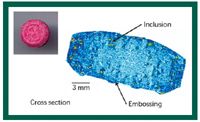
Figure 9: Distribution of particles in a fast-dissolving anti-allergy tablet.
Density distribution determinations
The intensity of the gray scale that appears in the X-ray images is partly a function of the sample's density. The density of standard uni-axially compressed tablets is not uniform (1, 10), and X-ray microtomography may provide a means to study and quantify this density inhomogeneity in tablets. Density differences have been detected in immediate-release tablets (see Figure 11). By using standards of known density, researchers interested in the density of bone samples quantitatively computed this information directly from X-ray microtomography data (11). A similar approach with other materials also has been successful (12, 13). Quantitative studies of this type have been reported for pharmaceutical compacts. One study showed that the tablet shape and the presence of embossing resulted in nonuniformity in the density of compacts made from microcrystalline cellulose (14). In addition, researchers showed that die lubrication and the mode of compression each influenced the degree of this nonuniformity. In another study, X-ray microtomography of several compacted excipients showed how density variations in various regions of a compact control the mechanical response of the sample during tensile failure and indentation hardness tests (15). Researchers also demonstrated in this work that the degree of structural and mechanical anisotropy in a compact is significantly less for highly deformable (plastic) materials.
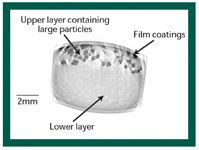
Figure 10: Distribution of particles in a controlled- release osmotic tablet.
Foreign matter detection
A unique application of X-ray microtomography is the detection and location of foreign matter such as a metal particle within a solid dosage form. Such atypical substances show up very clearly as being different from the materials commonly used to manufacture pharmaceutical tablets. A metal particle within a tablet creates a hot spot in the tomographic image that shows it is unmistakably foreign (see Figure 12). This information enables the location of the particle to be exactly pin-pointed even though it is entirely contained within the dosage form and its size is quite small (~50 μm width in this example).

Figure 11: Density variations in an immediate- release antacid tablet.
Counterfeit product detection
Counterfeit tablets can be difficult to distinguish from authentic dosage forms on the basis of external appearances. By using X-ray microtomography, however, it is possible to compare the internal structures and dimensions of two tablets without destroying the samples, which may be important if the tablet is to be used as evidence in patent litigation or other legal proceedings. Figure 13 shows the images of two tablets, an innovator's patented dosage form and an unofficial copy, in which clear differences in the internal structures (
e.g.,
layered core structure) can be seen easily.

Figure 12: A metal particle in a placebo tablet.
Future applications
Compaction studies.
Several researchers have used X-ray microtomography to study changes in the structure of porous composites and foams under applied external stresses (16–18). It is implicit from these studies that the technique also has potential use in research into powder compaction and the formation of compressed tablet dosage forms (12, 17). It is likely that the time-dependent structural information obtained from such studies would provide considerable insight into the pharmaceutical manufacturing processes of tablet manufacture and dry granulation. Current measurement systems cannot collect data rapidly enough to enable powder compaction to be studied under current pharmaceutical manufacturing conditions, nor do they enable the behavior of the smallest individual particles to be resolved. The response time of research instruments is improving rapidly, however, and the need for studying short-lived events and even smaller samples has been recognized by commercial instrument designers and manufacturers. Using synchotron X-ray sources can provide some help in this regard (see http://
www.esrf.fr/Industry/Applications/Tomography/
), and enhanced X-ray sources, detector elements, control systems, and analysis software will likely lead to significant improvements in both response time and resolution for commercial instruments within the next 5–10 years.

Figure 13: Comparison of the structure of a counterfeit (top) and innovators (bottom) osmotic tablet.
Chemical mapping. Recent developments in instrumentation suggest that in the future, X-ray microtomography studies may provide information about the chemical nature of samples (9, 19). This is an exciting advance that could address one of the current limitations of the technique for fully characterizing pharmaceutical products (i.e., a lack of information about the chemical nature of the sample). Commercial instruments capable of this type of multifaceted analysis are still a long way away, but systems in which X-ray microtomography is combined with more conventional spectroscopic mapping techniques in a single integrated instrument are already under development. Currently these systems require the destruction of the sample to facilitate the spectroscopic mapping of the samples, but they do have the potential for providing a detailed three-dimensional map of the physical and chemical nature of a product based on the analysis of just one or two dosage forms. This is clearly a significant improvement over the capabilities of current nonintegrated systems that each require a comparable number of dosage units to complete a full analysis.
Conclusion
X-ray microtomography can obtain useful qualitative and quantitative information about the structure of pharmaceutical dosage forms. In the future, it is likely that X-ray microtomography also will be able to provide chemical mapping capabilities and improved spatial resolution of small structural features within these types of samples (9, 19, 20).
Acknowledgements
The authors acknowledge their coworkers at Pfizer Inc. for contributions made to this article. In particular, the work and input of Maureen Whitley and Mark Henson are gratefully acknowledged.
References
1. G. Nebgen
et al.,
"
1
H-NMR Microscopy of Tablets,"
J. Pharma. Sci.
84
(3), 283–291 (1995).
2. Y. Saito et al., "New Characterization Method for Pore and Packing Structure in Powder Compacts Using Confocal Laser Scanning Microscope," J. Electron Microsc. 51 (4), 215–223 (2002).
3. A.G. Thombre et al., "Osmotic Drug Delivery Using Swellable-Core Technology," J. Controlled Release 94 (1), 75–9 (2004).
4. W. Cao et al., "Modeling of Transmitted X-ray Intensity Variation with Sample Thickness and Solid Fraction in Glycine Compacts," J. Pharm. Sci. 92 (12), 2345–2353 (2003).
5. L. Farber, G. Tardos, and J.N. Michaels "Use of X-ray Tomography to Study the Porosity and Morphology of Granules," Powder Technol. 132 (1), 57–63 (2003).
6. C.R. Appoloni et al., "Characterization of Porous Microstructure by X-ray Microtomography," X-ray Spectrometry 31 (2), 124–127 (2002).
7. J.-Y. Buffiere et al., "Damage Assessment in an Al/SiC Composite during Monotonic Tensile Tests Using Synchrotron X-ray Microtomography," Mater. Sci. Eng.,A 234–236, 633-635 (1997).
8. J.O. Milewski et al., "Using Synchrotron X-ray Microtomography to Detect Defects," Welding J. 73 (2), 45-49 (1994).
9. C.G. Schroer et al., "Mapping the Chemical States of an Element inside a Sample Using Tomographic X-ray Absorption Spectroscopy," Appl. Phys. Lett. 82 (19), 3360–3362 (2003).
10. S. Shima and M.A.E. Saleh, "Compaction-Induced Anisotropy in Internal Structure of Ceramic Powder," J. Am. Ceramic Soc.76 (5), 1303–1307 (1993).
11. A. Kohlbrenner et al., "In Vivo Microtomography," in Noninvasive Assessment of Trabecular Bone Architecture and the Competence of Bone, M. Bay, Ed. (Kluwer Academic/Plenum, New York, NY, 2001), pp. 213–224.
12. E. Badel et al., "Quantitative Microtomography: Measurement of Density Distribution in Glass Wool and Local Evolution during a One-Dimensional Compressive Load," Meas. Sci. Technol. 14 (4), 410–420 (2003).
13. S. Burch, "Measurement of Density Variations in Compacted Parts Using X-ray Computerized Tomography," Metal Powder Report 57 (2), 24–28 (2002).
14. I.C. Sinka et al., "Measurement of Density Variations in Tablets Using X-ray Computed Tomography," Int. J. Pharmaceutics 271 (1–2), 215–224 (2004).
15. M.P. Mullarney and B.C. Hancock, "Investigation of the Anisotropy in Uni-Axially Compacted Pharmaceutical Powders," poster W4295 presented at the American Assocation of Pharmaceutical Scientists Annual Meeting, Salt Lake City, UT, 2003.
16. J.A. Elliot et al., "In Situ Deformation of an Open-Cell Flexible Polyurethane Foam Characterized by 3D Computed Microtomography," J. Mater. Sci. 37 (8), 1547–1555 (2002).
17. E. Maire et al., "In Situ X-ray Tomography Measurements of Deformation in Cellular Solids," MRS Bulletin 28 (4), 284–289 (2003).
18. E.N. Landis and E.N. Nagy, "Three-Dimensional Work of Fracture for Mortar in Compression," Engineering Fracture Mechanics 65, 223–234 (2000).
19. C. Rau, A. Somogyi, and A. Simionovici, "Microimaging and Tomography with Chemical Speciation," Nucl. Instrum. & Methods in Phys. Res., Sect. 200, 444–450 (2003).
20. G.R. Davis and J.C. Elliott, "High Definition X-ray Microtomography Using a Conventional Impact X-ray Source," J. de Physique IV 104 (2), 131–134 (2003).
Bruno C. Hancock are scientists in the dosage form development group at Pfizer Global Research and Development, Eastern Point Road, Groton, CT 06340, tel. 860.715.2484, fax 860.715. 7972, bruno_c_hancock@groton.pfizer.com.
Matthew P. Mullarney are scientists in the dosage form development group at Pfizer Global Research and Development, Eastern Point Road, Groton, CT 06340, tel. 860.715.2484, fax 860.715. 7972.
Newsletter
Get the essential updates shaping the future of pharma manufacturing and compliance—subscribe today to Pharmaceutical Technology and never miss a breakthrough.





